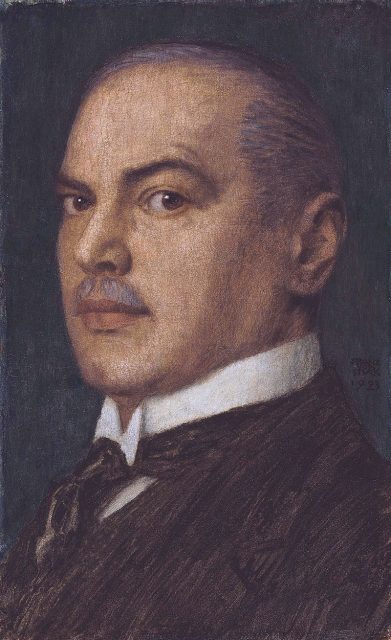Although most European nations possess unique folklore traditions, some of the traditions share common themes, motifs, and storylines. One such theme is the myth of the Wild Hunt, which is present throughout European folklore and depicts a band of ghostly, or undead, mounted hunters who roam through the forests, fields, and marshes in wild pursuit of prey. According to the myth, those who encounter the supernatural band of hunters are either killed or taken to the underworld. The Wild Hunt was seen as an ill omen: It was believed that the band of hunters would appear only to announce the imminent arrival of war, plague, or another kind of catastrophe.
Contemporary ethnologists believe that the origin of the myth dates back to the Germanic pagan tradition, from which it spread to surrounding nations and eventually across Europe. Wotan, the ancient Germanic god of war, wind, and the dead, is most commonly perceived as the haunting leader of the band of hunters. However, traditions of some of the nations replaced Wotan with other historical or mythological figures. For example, French folklore sees King Arthur of Brittany as the head horseman and Welsh traditions depict Gwyn ap Nudd, the Welsh god of the underworld, as the lead rider.
Although the Wild Hunt has been around for centuries, it became popular among artists and writers in the first half of the 19th century after the acclaimed German historian Jacob Grimm included it in his influential book Deutsche Mithologie, which was an extensive compendium of German folklore traditions. Since then, numerous painters have used the Wild Hunt as inspiration for some of the eeriest paintings in history.

One such painting, Franz Stuck’s Wilde Jagd (“The Wild Hunt”) has been generating controversy since the late 1930s because it allegedly foresaw the rise of Adolf Hitler and Nazi Germany.
Franz Stuck was a German symbolist painter, sculptor, and architect who co-founded the movement of the Munich Secession and rose to fame as one of the most influential German artists of the late 19th and early 20th centuries. He derived most of his inspiration from mythology and painted his dreamy works in dark and somber tones. Stuck painted The Wild Hunt in 1889. The painting depicts the fierce figure of Wotan as he threateningly wields a sword while riding a black horse. Wotan is surrounded by spectral figures who appear as if they were hauntingly moving toward the spectator.
At the time when Stuck painted it, The Wild Hunt was positively received by critics and casual lovers alike. However, in the late 1930s, it became evident that the Wotan figure in the painting eerily resembled Adolf Hitler. Stuck had finished the painting in 1898, the same year when Hitler was born, so many theorized that the painter predicted the coming of a cataclysm in the form of Nazism. Furthermore, in 1936, Karl Gustav Jung, the famous psychoanalyst and former disciple of Sigmund Freud, stated that the symbolic avatar of Wotan awoke and assumed the form of Adolf Hitler. Naturally, many people immediately accepted Stuck’s painting as the prophecy of doom.

However, the reality was quite different and interesting. Stuck’s painting didn’t predict the future but was a source of inspiration for Hitler. Hitler was very fond of Stuck’s work since his childhood: The Wild Hunt became his favorite painting at the age of 13 and remained a major source of inspiration even when he became known as the führer. He even acquired the original and kept it in his personal gallery. Many historians claim that Hitler modeled his appearance and demeanor after Stuck’s painted Wotan. He seemed to have liked the idea of dressing and combing his hair like Stuck’s artistic representation of the ancient Germanic god of war.
Read another story from us: The eclipse that saved Christopher Columbus and his crew from starvation
Stuck’s painting was created as a work of art, it wasn’t meant to be affiliated with a sinister ideology which sought to establish world domination. Sadly, its legacy will forever be marred by the fact that it inspired Hitler throughout his life.
